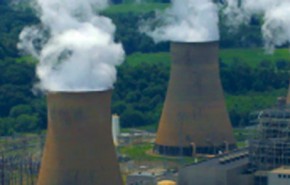GAI’s professionals support our Power Generation clients with the studies and engineering needed to comply with ever-changing environmental regulations.
Did You Know?
On March 29, 2023, the Environmental Protection Agency (EPA) proposed supplemental rulemaking to strengthen certain discharge limits in the Steam Electric Power Generating category (40 CFR Part 423) (Proposed Rule).
According to the EPA, the Proposed Rule would establish more stringent discharge standards for three types of wastewater generated at coal-fired power plants:
- Flue Gas Desulfurization (FGD) wastewater
- Bottom Ash (BA) transport water
- Combustion Residual Leachate (CRL)
Limitations for FGD wastewater and BA transport water were previously established in the Steam Electric Power Generating Effluent Guidelines – 2015 Final Rule (2015 Final Rule) and modified in the 2020 Steam Electric Reconsideration Rule (2020 Reconsideration Rule). The Proposed Rule would tighten effluent limitations for FGD wastewater and BA transport water, allowing no discharge of these wastewaters after a certain date.
Limitations for CRL and legacy wastewater were initially promulgated by the EPA in the 2015 Final Rule but were vacated by the Fifth Circuit Court of Appeals on April 12, 2019, in a decision issued by the U.S. Court of Appeals for the Fifth Circuit in Southwestern Electric Company v. U.S. Environmental Protection Agency, Case No. 15-60821, 2019. According to the EPA, the Proposed Rule establishes limitations for mercury and arsenic for CRL and is based on chemical precipitation technology. EPA solicited public comment on these limitations and their method of implementation, including:
- Whether different or additional limitations should be imposed for facilities that manage FGD wastewater or stormwater together with CRL
- Whether different or additional limitations for CRL should apply to CRL discharged through groundwater and considered to be equivalent to a direct discharge to surface water
- Whether different subcategories should be established for CRL generated pre- and post-closure of the associated landfills
According to the EPA, the Proposed Rule defines two new types of legacy wastewater: surface impoundment decant wastewater and surface impoundment dewatering wastewater. EPA does not specify a nationwide technology limit applicable to legacy wastewater at this time but proposes that such limitations are derived on a site-specific basis using best professional judgment. In the Proposed Rule, EPA clarifies that the regulation applies to legacy wastewaters at inactive/retired power plants because the discharge of these wastewaters “results from the operation of a generating unit.” EPA solicits comments on legacy wastewater, including whether there are additional wastewaters that may continue to be discharged after the retirement of the facility.
According to the EPA, the Proposed Rule defines two new types of legacy wastewater: surface impoundment decant wastewater and surface impoundment dewatering wastewater.
According to the EPA, the Proposed Rule also requires that each facility subject to the regulation must maintain a publicly accessible website related to the ELG rule with specific information. This requirement appears similar to the requirement within the federal Coal Combustion Residuals Rule, which requires facilities to maintain a publicly accessible internet website containing prescribed regulatory compliance documents.
EPA also published a direct final rule to extend the deadline for plants to opt-in to the 2028 early retirement provision promulgated in the 2020 Reconsideration Rule.
For more information, visit: Steam Electric Power Generating Effluent Guidelines – 2023 Proposed Rule | US EPA
Read more about GAI’s work related to this topic:
- CCR and ELG – A Joint Approach to Bottom Ash Management – GAI Consultants | May 25, 2017
- Effluent Limitations Guidelines (ELG), Part V Flue Gas Desulfurization (FGD) Wastewater – GAI Consultants | July 14, 2016
- Effluent Limitations Guidelines (ELG), Part IV Zero Liquid Discharge — Bottom Ash Transport Water – GAI Consultants | April 14, 2016
- Effluent Limitations Guidelines (ELGs), Part III: Importance of the Power Station Water Balance – GAI Consultants | March 8, 2016
- Effluent Limitations Guidelines (ELG), Part II Compliance Resources – GAI Consultants | February 9, 2016
- Effluent Limitations Guidelines (ELG), Part I: Compliance Check – GAI Consultants | December 15, 2015
![]() Contact Arica DiTullio, PE, 412.399.5455, for more information about GAI’s environmental and engineering services for power, manufacturing, and industrial water projects — message GAI and start the conversation about how our multidiscipline professionals can meet your unique project needs.
Contact Arica DiTullio, PE, 412.399.5455, for more information about GAI’s environmental and engineering services for power, manufacturing, and industrial water projects — message GAI and start the conversation about how our multidiscipline professionals can meet your unique project needs.


